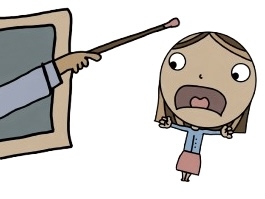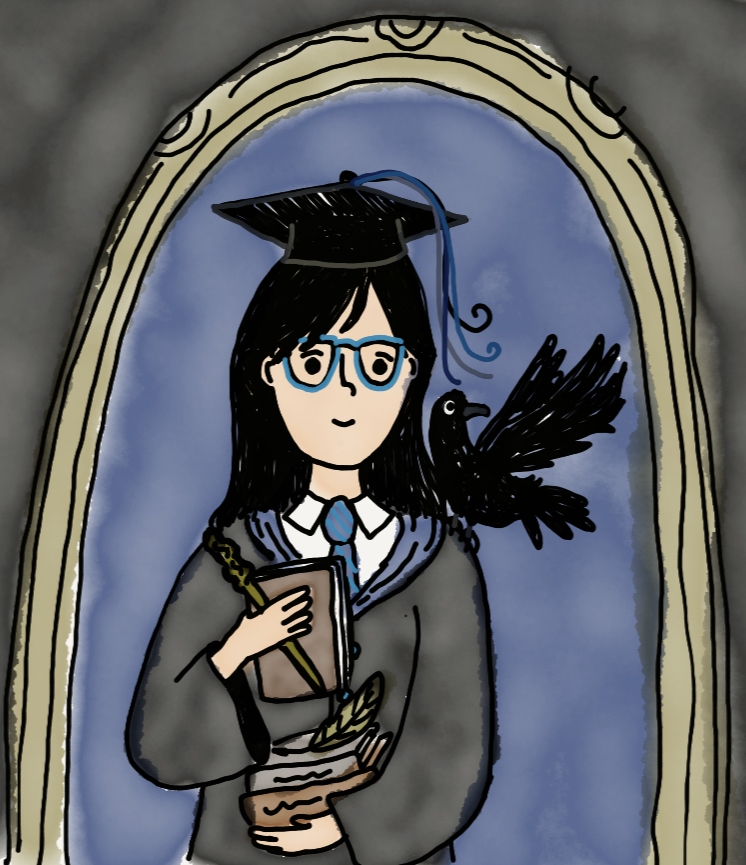
“Why? Why is this wrong? Why did I lose points? Why did you decide to pick up teaching? Why are you still here?”
All of these are questions that every student, seeing red, has asked a teacher throughout their learning career. Whether said aloud or kept furiously locked behind a silent mouth bearing a strained, fake smile, there has not been a single student to make it all the way through high school without loathing a teacher in some way, shape, or form. But again, why? Why do students carry such a painful burden, weighed down by hatred for their captors, for eight hours every day? The answer, for many students, is very simple: teachers often incite this hatred on their own.
Every day, teachers are given the same directive: teach. This goal is intentionally vague, as teachers get to create their courses and curriculums around their style, playing to their strengths and weaknesses. Some teachers, however, lean heavily into the latter. This, for lack of better words, failure to teach, is not inherently harmful to students. What is harmful is the amount of power these “teachers” hold over their students. On any given day, some teachers can find enough excuses to, out of spite, move your grade from an A to a B, a C to a D, or even start giving out zeros on assignments like candy on Halloween. When a teacher actually decides things out of spite, this possibility of abuse can be devastating to the students they teach.
Teachers can generally be categorized into a few different mindsets, each with unique characteristics, and a net output of being good or bad for a student. Starting off, one of the bad mindsets is the “Tenured” teacher.
The “Tenured” teacher does not necessarily need to have tenure in order to live their day-to-day life as if they do. This type of teacher shows up to work every day with an apathetic expression and lets the students take the burden of teaching into their own hands. This teacher sits at their desk, pretending to check emails as soon as anybody looks while secretly playing Candy Crush and Solitaire. They have not actually graded an assignment in ages, and “Tenured” teachers often fall into two sub-categories with their grading: the “Hundreds”, or the “Zeros”. Each student prays for the “Hundred” teacher, as that means a free A in whatever subject they are taking regardless of whether or not they learn something. The “Zero” teacher, on the other hand, is the bane of a student’s existence. Their mindset is “teach no lessons, give no points”, and are steadfast in insisting that each student simply did not try hard enough, praying that the variety in grades they give out keeps them off the suspicious list for ineffective teachers.
The second bad type of teacher is the “Ruthless” teacher, one that arrives at school with the one hope of being able to disguise condescending criticism as constructive criticism, while also making students suffer along the way. This teacher hands back bad grades with a hidden, sadistic smile as they watch the terror sit in with students who have lost half of the possible points just because of poorly explained formatting. This teacher’s worst fear is students that do not care about grades, not because they are not learning, but because they do not give off the sense of defeat that these teachers use as their lifeblood when they get a bad grade. Fortunately for students, these teachers can be fought against, as they will give full credit at times if a student does EVERYTHING right in an assignment. This will almost never happen, but those truly dedicated to their academic results can earn themselves their rightful and deserved A. Unfortunately for other students, these teachers rule with an oppressive iron fist, and once someone gets on their bad side, they can be sure of a rocky incoming year.
A third type of teacher is one of the most dangerous of all three. This type of teacher is simply known as the “Bad” one, a teacher objectively lacking in the teaching skill required to command a class. This teacher will be all over the place, impatient, unapproachable, assigning lots of work and grade it at a snail’s pace, while at the same time having the audacity to be rude to students. When a class period holds nothing but the hope for it to end, not even anything for the students to focus on, there is a real problem with the teacher. A “bad” teacher is grading assignments long past the end of the school year, lies to students, is wrong frequently, chooses to shift the blame instead of accepting responsibility, and has an intentionally confusing syllabus designed to trick students.
Not all teachers are bad, however. There are mindsets that teachers can follow to have an enjoyable and effective classroom. The first of the good mindsets is the “College Comes Early” mindset.
The “College Comes Early” mindset belongs to a teacher that acts like a mixture of a high school teacher and a college professor. This teacher recognizes the humanity of each student, giving them lots of personal autonomy and freedom, while also recognizing that they are a student. This type of teacher will tell students what they are doing wrong and help them with their problems. At the same time, they will make sure students are not pampered and given the grade for free. This teacher is actually working on preparing students for life after high school, and a schedule with many of these teachers will lead to a very enjoyable year.
The second type of good teaching mindset is the “Teacher” mindset. Shocking, right? A teacher with the goals and ideals of teaching students. The “Teacher” makes it their personal mission to make their students understand their course, and often holds a great love for the subject they teach. This type of teacher will make sure that what they are teaching is effective and understandable. They will listen and respond to feedback, and actually try to support the students that do not understand what is being taught. This does not mean that the teacher should give a free grade out, and they will not—this teacher instead focuses on making sure that the grade reflects a student’s understanding of the class, something the teacher holds as a personal goal. They are also patient, understanding, and willing to bend their mindset for the benefit of students, holding an appreciation for their job.
Overall, being a teacher is such a nuanced job with so many different methods of approach that make it impossible to classify every one out there. These few, however, are some of not only the most common, but the most impactful teachers there are. And through the good, the bad, and the ugly, at the end of the day—it is only four years.





